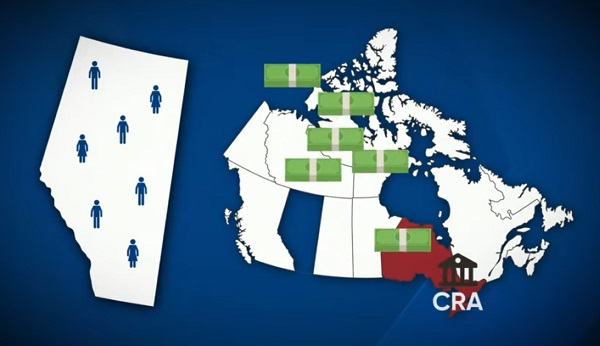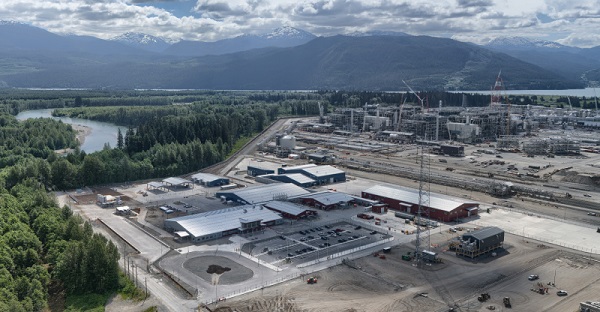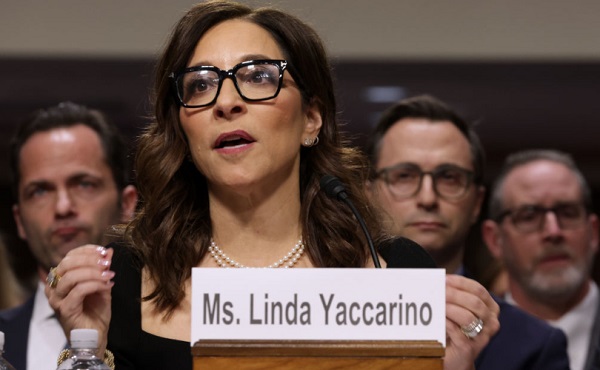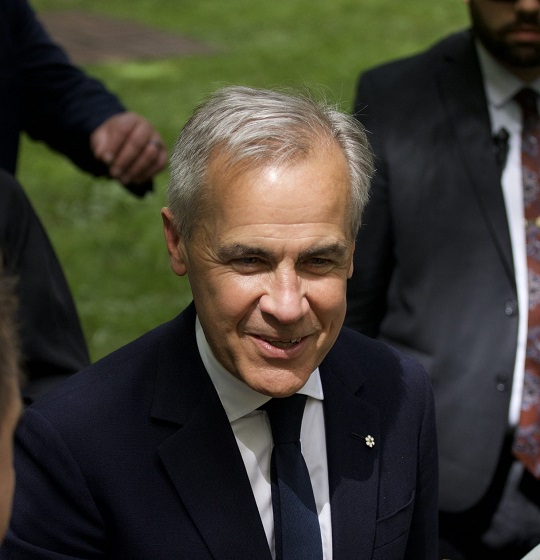Alberta
$8.6 billion committed: Province to fund up to 30 new schools and 8 modernizations in each of next 3 years

Alberta’s government is committing $8.6 billion to complete and open 200,000 new student spaces across the province in the next seven years.
Alberta’s population is growing exponentially as more people from across Canada and around the world choose to make the province their home. This rapid growth is causing strain on the Kindergarten to Grade 12 education system, with student enrolment increasing at historic rates.
To keep up with fast-rising student enrolment, Alberta’s government is committing $8.6 billion through the new School Construction Accelerator Program. This program will create more than 200,000 new and modernized spaces for students to learn, grow and reach their full potential. Starting in Budget 2025, Alberta’s government will kick-start up to 30 new schools and as many as eight modernizations and replacement schools every year for the next three years.
“Every student deserves a quality education in a school that can meet their learning needs and set them on a path to success in the future. As hundreds of thousands of people are choosing to make Alberta their home, we are responding by funding and building the schools our fast-growing communities need. As we build, we’re asking school boards and municipalities to work with us so we can get shovels in the ground as quickly as possible.”
The Calgary Metropolitan Area and Edmonton Metropolitan Region, along with other communities across the province, have been feeling the pressures of strong student growth and aging school infrastructure. The School Construction Accelerator Program will result in 50,000 new or modernized student spaces over the next three years – and more than 150,000 new and modernized spaces over the following four years. In total, the School Construction Accelerator Program will mean approval for up to 30 new school projects and as many as eight new modernization and replacement projects every year over the next three years. In addition to the school projects, 20,000 new student spaces will be delivered through modular classrooms over the next four years.
“We are investing in the future of our province. Through our commitment to kick-start 30 new schools each year over the next three years, we are delivering new student spaces across the province and in our fastest-growing communities for students to learn, grow and reach their full potential.”
“I look forward to working with my ministry and industry partners to build the schools Albertans need and ensuring that each project is as unique as the students who use them. School builds, modernizations and renovations support tens of thousands of jobs across the province. As Alberta communities continue to grow, this announcement will allow us to meet demands for spaces faster and more efficiently, all while creating jobs and boosting our local and provincial economies.”
The School Construction Accelerator program also takes immediate action to speed up the construction of schools by enabling school projects to be approved in-year for their next stage in the construction process without having to wait for the next budget cycle. This means all previously approved school projects currently in the planning and design stages can move forward to the next stage as soon as they are ready to do so. Through this change, 10 previously announced priority school projects are now approved for the next stage of project delivery, including six moving to full construction.
“We appreciate the government’s recognition that there is an urgent need to provide additional learning spaces for CBE students. CBE families are looking forward to new schools in their growing communities and modernizations to address aging infrastructure. Thank you to the Premier and the Government of Alberta for this much-needed investment.”
“Edmonton Public Schools is grateful for the province’s funding for school infrastructure. This crucial support will help us meet urgent needs and positively affect our students and families.”
The population growth has not only increased pressure in the public and separate school system but has increased demand for publicly funded charter programming and space needs. Public charter schools play an important role in Alberta’s education system by offering unique programming to students focused on a learning style, teaching style, approach or pedagogy not already being offered by school boards where the charter is located. As part of this accelerated program, Alberta’s government will add 12,500 new charter school student spaces over the next four years through a Charter School Accelerator pilot program.
“The Association of Alberta Public Charter Schools is elated by this historic capital announcement. It will help ensure that more families and students can access the excellent programming our public charter schools offer for generations to come.”
Independent schools offer specialized learning supports as well as religious and cultural programming to support parental and educational choice. Alberta’s government will continue to explore opportunities for a school capital pilot program for non-profit independent schools to broaden learning options for Alberta families.
Quick facts
- The School Construction Accelerator Program will deliver more than 200,000 new and modernized student spaces.
- Previously approved school projects and modular classrooms will create about 50,000 new and modernized student spaces over the next three years.
- The program will create about 150,000 additional new and modernized student spaces. This includes:
- more than 100,000 new student spaces
- more than 16,600 modernized student spaces
- more than 20,000 student spaces in new or relocated modular classrooms
Alberta
Temporary Alberta grid limit unlikely to dampen data centre investment, analyst says
From the Canadian Energy Centre
By Cody Ciona
‘Alberta has never seen this level and volume of load connection requests’
Billions of investment in new data centres is still expected in Alberta despite the province’s electric system operator placing a temporary limit on new large-load grid connections, said Carson Kearl, lead data centre analyst for Enverus Intelligence Research.
Kearl cited NVIDIA CEO Jensen Huang’s estimate from earlier this year that building a one-gigawatt data centre costs between US$60 billion and US$80 billion.
That implies the Alberta Electric System Operator (AESO)’s 1.2 gigawatt temporary limit would still allow for up to C$130 billion of investment.
“It’s got the potential to be extremely impactful to the Alberta power sector and economy,” Kearl said.
Importantly, data centre operators can potentially get around the temporary limit by ‘bringing their own power’ rather than drawing electricity from the existing grid.
In Alberta’s deregulated electricity market – the only one in Canada – large energy consumers like data centres can build the power supply they need by entering project agreements directly with electricity producers.
According to the AESO, there are 30 proposed data centre projects across the province.
The total requested power load for these projects is more than 16 gigawatts, roughly four gigawatts more than Alberta’s demand record in January 2024 during a severe cold snap.
For comparison, Edmonton’s load is around 1.4 gigawatts, the AESO said.
“Alberta has never seen this level and volume of load connection requests,” CEO Aaron Engen said in a statement.
“Because connecting all large loads seeking access would impair grid reliability, we established a limit that preserves system integrity while enabling timely data centre development in Alberta.”
As data centre projects come to the province, so do jobs and other economic benefits.
“You have all of the construction staff associated; electricians, engineers, plumbers, and HVAC people for all the cooling tech that are continuously working on a multi-year time horizon. In the construction phase there’s a lot of spend, and that is just generally good for the ecosystem,” said Kearl.
Investment in local power infrastructure also has long-term job implications for maintenance and upgrades, he said.
“Alberta is a really exciting place when it comes to building data centers,” said Beacon AI CEO Josh Schertzer on a recent ARC Energy Ideas podcast.
“It has really great access to natural gas, it does have some excess grid capacity that can be used in the short term, it’s got a great workforce, and it’s very business-friendly.”
The unaltered reproduction of this content is free of charge with attribution to the Canadian Energy Centre.
Alberta
Alberta Next: Taxation

A new video from the Alberta Next panel looks at whether Alberta should stop relying on Ottawa to collect our provincial income taxes. Quebec already does it, and Alberta already collects corporate taxes directly. Doing the same for personal income taxes could mean better tax policy, thousands of new jobs, and less federal interference. But it would take time, cost money, and require building new systems from the ground up.
-

 illegal immigration2 days ago
illegal immigration2 days agoICE raids California pot farm, uncovers illegal aliens and child labor
-

 Uncategorized14 hours ago
Uncategorized14 hours agoCNN’s Shock Climate Polling Data Reinforces Trump’s Energy Agenda
-

 Business1 day ago
Business1 day agoTrump to impose 30% tariff on EU, Mexico
-

 Energy1 day ago
Energy1 day agoLNG Export Marks Beginning Of Canadian Energy Independence
-

 Business1 day ago
Business1 day agoCarney government should apply lessons from 1990s in spending review
-

 Entertainment1 day ago
Entertainment1 day agoStudy finds 99% of late-night TV guests in 2025 have been liberal
-

 Frontier Centre for Public Policy14 hours ago
Frontier Centre for Public Policy14 hours agoCanada’s New Border Bill Spies On You, Not The Bad Guys
-

 Opinion7 hours ago
Opinion7 hours agoPreston Manning: Three Wise Men from the East, Again






